Time Management Hacks: 10 Powerful Techniques for Efficient Living.

Disclaimer: For Privacy reasons, the Human names and Company names in “real-life examples and case studies” are not real its fictional,. But the case study stories are real.
Introduction:
In today’s racing world, mastering time management is essential for a successful and fulfilling life. 🚀 This blog explores ten powerful time management hacks to revolutionize how we approach tasks and responsibilities.
A. Definition of Time Management:
Time management is the art of planning and organizing time to optimize productivity. 📅 By setting priorities and utilizing resources effectively, we can strike a balance between work, personal life, and leisure.
B. The Importance of Efficient Time Management in Modern Life:
In the digital age, effective time management is critical for staying focused and avoiding burnout. 📱 It allows us to accomplish more and experience a sense of achievement.
C. Overview of the 10 Time Management Hacks:
Prioritize Your Tasks: 🎯 Use techniques like the Eisenhower Matrix to focus on essential tasks.
Set SMART Goals: 🎯 Apply Specific, Measurable, Achievable, Relevant, and Time-bound goals to create a clear roadmap for success.
Time Blocking and Chunking: 🎯 Organize your day into focused intervals using time blocks and task chunking.
Beat Procrastination with the Two-Minute Rule: 🎯 Overcome procrastination with the two-minute rule for immediate action.
Utilizing the Pomodoro Technique: 🎯 Boost productivity with focused work intervals and short breaks.
Organizing Your Workspace for Maximum Efficiency: 🎯 Optimize your workspace for enhanced focus and reduced distractions.
Harnessing the Power of Technology and Apps: 🎯 Explore time management apps and digital tools for efficiency.
The Art of Saying No: 🎯 Set boundaries and confidently decline non-priority tasks.
Learn to Delegate and Collaborate: 🎯 Accomplish larger tasks through delegation and collaboration.
Cultivating Work-Life Balance and Self-Care: 🎯 Prioritize self-care and work-life balance for sustained productivity.
In the subsequent parts, we’ll delve into each hack, providing practical insights and examples to empower you in managing time effectively.
Hack 1: Prioritize Your Tasks

One of the foundational pillars of effective time management is learning to prioritize tasks based on their importance and urgency. 🚀 By employing various techniques, such as the Eisenhower Matrix, you can make better decisions about how to allocate your time and energy.
A. Understanding the Eisenhower Matrix: The Eisenhower Matrix, also known as the Urgent-Important Matrix, is a powerful tool for categorizing tasks into four quadrants:
Important and Urgent: Tasks falling into this quadrant are top priorities that demand immediate attention. These could include urgent deadlines, emergencies, or time-sensitive projects.
Important but Not Urgent: In this quadrant, you’ll find tasks that contribute to long-term goals and personal development. Examples include planning, strategizing, and investing time in relationships.
Urgent but Not Important: Tasks here might appear pressing, but they don’t contribute significantly to your goals. Delegate or minimize these activities to avoid time wastage.
Not Urgent and Not Important: These tasks are distractions and time-fillers. Eliminate or reduce them to focus on what truly matters.
B. Identifying Urgent vs. Important Tasks: To apply the Eisenhower Matrix effectively, assess each task’s urgency and importance. 📅 Ask yourself:
Does this task have a strict deadline?
Will it bring me closer to my goals?
What are the consequences of not completing it promptly?
By categorizing tasks, you’ll gain clarity on what requires immediate attention and what can wait.
C. Delegating and Eliminating Non-Essential Tasks: Once you’ve prioritized your tasks, consider delegation for tasks that others can handle efficiently. 🙌 Delegation not only frees up your time but also empowers your team members. Additionally, don’t hesitate to eliminate tasks that offer little value or are unnecessary.
D. Real-life Examples and Case Studies: To illustrate the effectiveness of the Eisenhower Matrix, let’s explore some real-life examples and case studies. 📊 We’ll examine how successful individuals and businesses have used this technique to enhance their productivity and decision-making.
Individual Success Story: Linda’s Time Management Breakthrough
Linda, a busy marketing executive, often felt overwhelmed by her workload and struggled to balance competing priorities. Upon learning about the Eisenhower Matrix, she decided to implement it to regain control of her time. She identified her important and urgent tasks, which included meeting client deadlines and handling last-minute campaign changes.
By focusing on these high-priority tasks first, Linda significantly reduced her stress levels and met her deadlines more effectively. She also recognized the importance of dedicating time to personal development (important but not urgent), leading to improved creativity and problem-solving skills. As a result, Linda’s overall productivity and job satisfaction soared, earning her accolades from both clients and her superiors.
Organizational Success: Waytocognition Manufacturing’s Production Efficiency
WTC Manufacturing faced operational challenges due to inefficiencies in its production process. The management decided to use the Eisenhower Matrix to optimize operations. They categorized tasks as either important and urgent (equipment maintenance and quality control) or important but not urgent (process optimization and employee training).
By addressing urgent tasks promptly and dedicating time to important but non-urgent improvements, WTC Manufacturing experienced a significant increase in production efficiency. The streamlined workflow reduced downtime, waste, and rework, ultimately boosting profitability. The company’s adoption of the Eisenhower Matrix became a cornerstone of its continuous improvement culture.
Personal Development Journey: Mike’s Work-Life Balance
Mike, a dedicated software developer, found himself working long hours and neglecting his personal life. Feeling burnt out, he applied the Eisenhower Matrix to assess his time allocation. He discovered that he was spending considerable time on tasks that were neither important nor urgent, such as excessive social media use.
With a renewed focus on his high-priority tasks, Mike achieved a healthier work-life balance. He allocated time for family, hobbies, and exercise—activities that were important but not urgent. As a result, Mike’s productivity improved, and he experienced a newfound sense of well-being, leading to enhanced creativity and job satisfaction.
Conclusion:
Prioritizing your tasks using the Eisenhower Matrix is an indispensable skill in time management. 🎯 By focusing on what truly matters and efficiently handling urgent matters, you’ll be better equipped to make the most of your time and achieve your goals.
Hack 2: Set SMART Goals
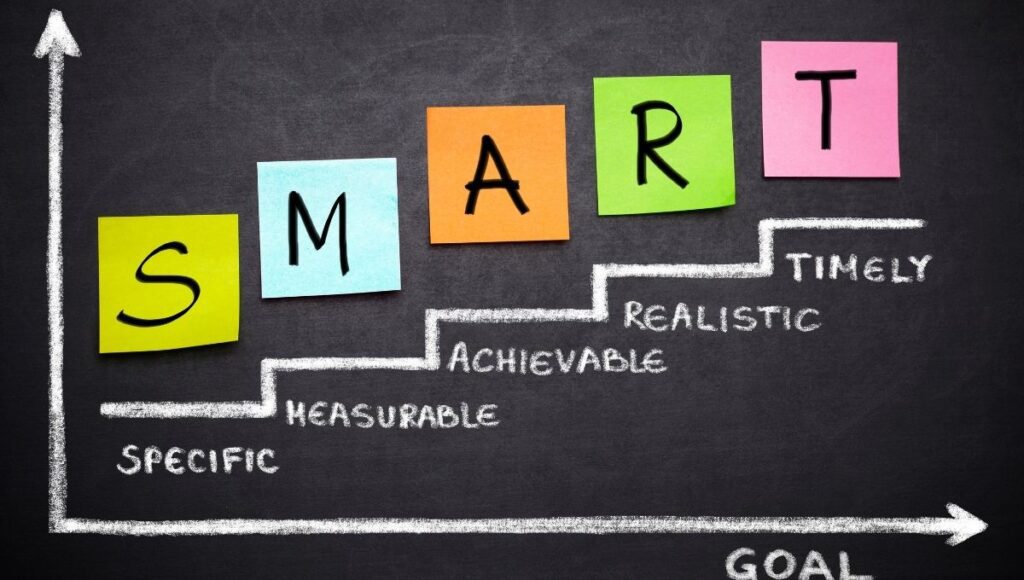
Setting goals is a fundamental aspect of effective time management. 🚀 However, to ensure your goals are achievable and measurable, you must employ the SMART criteria—Specific, Measurable, Achievable, Relevant, and Time-bound.
A. Understanding the SMART Criteria:
Specific: Clearly define what you want to achieve. Avoid vague goals and be precise about the outcome you desire. 📝 For example, instead of saying “improve productivity,” specify “increase sales by 20%.”
Measurable: Establish clear metrics to track your progress. 📊 This will enable you to know when you have achieved your goal and how close you are to reaching it.
Achievable: Set goals that challenge you but are still attainable. 🏆 Unrealistic goals can lead to frustration, while achievable ones boost motivation.
Relevant: Align your goals with your broader objectives and values. 🎯 Ensure they contribute to your personal and professional growth.
Time-bound: Assign a deadline to each goal. ⏰ This creates a sense of urgency and helps you stay on track.
B. Applying SMART Goals to Different Aspects of Life: SMART goals can be applied to various areas of your life, such as career, health, relationships, and personal development. 🌟 For instance:
Career: “Secure a leadership position within my department by completing leadership training courses and taking on additional responsibilities within the next 12 months.”
Health: “Run a half-marathon within six months by following a structured training plan and maintaining a healthy diet.”
Relationships: “Spend quality time with family at least once a week by planning dedicated family activities and minimizing distractions.”
C. Tracking Progress and Adjusting Goals: Once you’ve set your SMART goals, it’s crucial to track your progress regularly. 📅 This could involve weekly or monthly check-ins to evaluate how far you’ve come and identify any adjustments needed. Be flexible and open to modifying your goals as circumstances change.
D. Real-life Examples and Case Studies: To see the power of SMART goals in action, let’s explore real-life examples and case studies from individuals and organizations that have achieved significant success through this goal-setting approach. 📈 Their experiences will inspire and motivate you to apply the SMART criteria to your own aspirations.
Individual Success Story: John’s Career Advancement
John, a dedicated marketing professional, aspired to advance in his career and take on a leadership role within his company. Using the SMART criteria, he set a specific goal to become a Marketing Manager within the next two years. He measured his progress by tracking his performance metrics, including successful campaign launches and increased customer engagement.
John ensured his goal was achievable by continuously improving his skills through courses and workshops. His ambition was relevant to his passion for marketing and aligned with his long-term career objectives. To stay on track, John set milestones for each quarter and received feedback from mentors and peers. Through perseverance and commitment to his SMART goal, John achieved his career milestone and now leads a thriving marketing team.
Organizational Success: waytocognition Tech’s Product Launch
wtc Tech, a tech startup, aimed to launch a groundbreaking product in the competitive market. To ensure success, the company applied the SMART criteria to its product development and marketing strategy. The team set specific objectives, such as reaching 10,000 pre-orders, and measured progress through pre-order sales data and customer feedback. They made sure the goal was achievable by thoroughly testing and refining the product before launch.
The product’s relevance was evident, as it addressed a pressing market demand and showcased the company’s expertise. wtc Tech established a time-bound plan with milestones for development, testing, and marketing efforts. By closely monitoring its progress and adapting to market dynamics, WTC Tech successfully achieved its goal, exceeding pre-order targets and gaining significant market share.
Personal Development Journey: Emily’s Fitness Transformation
Emily, a health enthusiast, wanted to embark on a fitness transformation to improve her overall well-being. She set SMART goals to lose 20 pounds within six months by engaging in regular exercise and following a balanced diet. Emily measured her progress through weekly weigh-ins and fitness-tracking apps. To make her goal achievable, she consulted with a nutritionist and created a personalized meal plan.
Emily’s fitness journey was relevant to her desire for a healthier lifestyle. She established a time-bound schedule for workouts and set incremental weight loss targets. Despite facing occasional challenges, Emily’s determination and adherence to her SMART goals paid off as she achieved her desired weight loss, gained physical strength and experienced a boost in confidence.
Conclusion:
By setting SMART goals, you provide yourself with a clear roadmap for success. 🏆 The specificity, measurability, achievability, relevance, and time-bound nature of these goals fuel your determination and focus. Embrace this powerful time management hack to propel yourself towards a more purposeful and rewarding life.
Hack 3: Time Blocking & Task Chunking
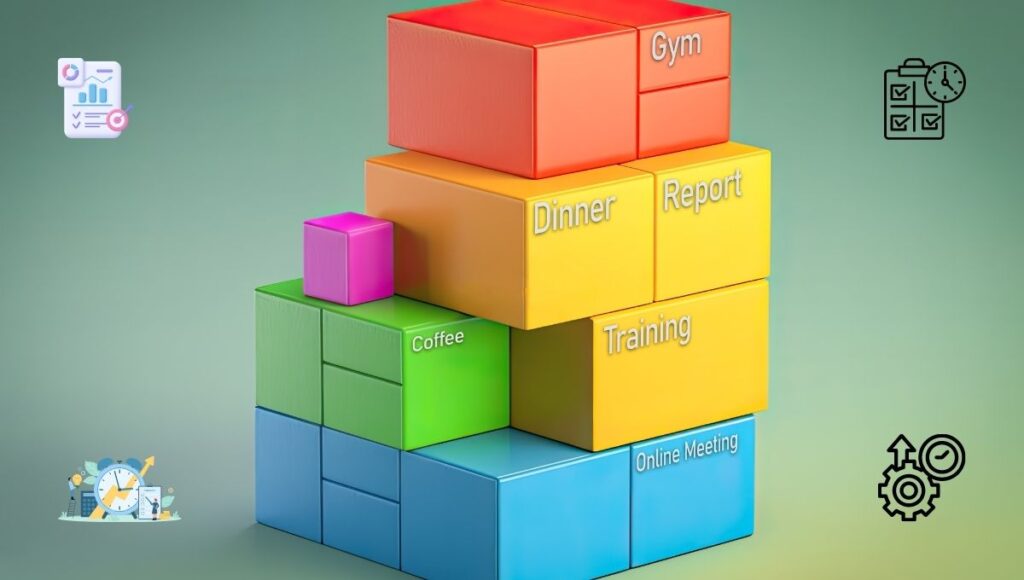
Time is a finite resource, and effective time management requires structuring your day for optimal productivity. 🚀 Time blocking and Task chunking are powerful techniques that enable you to focus on specific tasks during designated intervals, leading to enhanced efficiency and concentration.
A. How to Use Time Blocking for Improved Focus and Efficiency: Time blocking involves dividing your day into blocks of time dedicated to specific tasks or activities. 📅 During each block, you focus solely on the designated task, minimizing distractions and interruptions. For example:
Allocate a block in the morning for responding to emails and messages.
Designate a block in the afternoon for creative work or problem-solving tasks.
By concentrating on one task at a time, you can work more efficiently and maintain a flow state.
B. Creating Time Blocks for Different Activities: Adopt a flexible approach to time blocking, tailoring it to your unique schedule and responsibilities. 🕰️ Allocate blocks for work-related tasks, personal development, family time, and relaxation. Adjust the duration of blocks based on the complexity and importance of the tasks involved.
C. Combining Time Blocking with Task Chunking: Task chunking complements time blocking by breaking larger projects into smaller, manageable parts. 🎯 Rather than tackling an entire project at once, divide it into smaller tasks and allocate separate blocks to work on each chunk. This prevents feeling overwhelmed and allows you to make steady progress.
For example, if you’re writing a report, your task chunks might include research, outlining, writing, and editing. Assign dedicated blocks to each step for focused effort.
D. Real-life Examples and Case Studies:
To understand the effectiveness of time blocking and chunking, let’s explore real-life examples:
Emma’s Productive Workday: Emma, a freelance designer, adopted time blocking to structure her workday. She allocated specific blocks for client projects, business development, and personal time. By combining task chunking, she completed complex design projects efficiently, providing ample time for creativity and revisions.
Mark’s Study Success: Mark, a college student, used time blocking to balance his coursework and extracurricular activities. He dedicated blocks for studying different subjects and included breaks for relaxation. With focused study blocks, Mark improved his grades and reduced stress during exam periods.
Conclusion:
Time blocking and chunking are valuable techniques that help you take control of your day and make the most of your time. 🎯 By organizing tasks into dedicated blocks and breaking them into manageable chunks, you increase productivity, maintain focus, and achieve a sense of accomplishment. Embrace these time management hacks to enhance your efficiency and create a well-structured, fulfilling routine.
Hack 4: Beat Procrastination with the Two-Minute Rule

Procrastination is a common obstacle to productivity, but the Two-Minute Rule offers a simple and effective solution. 🚀 By breaking tasks into bite-sized actions that can be completed in two minutes or less, you can overcome inertia build momentum toward accomplishing larger goals, and easily do time management.
A. Understanding the Two-Minute Rule: The Two-Minute Rule, popularized by productivity expert David Allen, suggests that if a task takes less than two minutes to complete, you should do it immediately. 🕒 By swiftly addressing quick tasks, you prevent them from accumulating and becoming overwhelming. That’s key to the beginning of time management.
B. Tackling Small Tasks First: Often, our to-do lists include minor tasks that we tend to postpone. With the Two-Minute Rule, you can swiftly handle these tasks and clear them from your plate. For instance:
Respond to an email that requires a short reply.
Organize your desk or workspace.
Make a brief phone call.
By tackling these small tasks promptly, you create a sense of accomplishment and motivation to continue.
C. Building Momentum and Productivity: The Two-Minute Rule acts as a catalyst for productivity. As you complete quick tasks, you build momentum and transition into more substantial tasks with increased focus and motivation. 🚀 The sense of progress propels you forward, reducing the likelihood of procrastination.
D. Real-life Examples and Case Studies: Let’s explore real-life examples of individuals and professionals who have triumphed over procrastination using the Two-Minute Rule:
Amy’s Home Organization: Amy struggled to keep her home organized due to procrastination. She embraced the Two-Minute Rule by immediately tidying up after herself, such as putting away dishes or hanging up clothes. By implementing this rule consistently, Amy transformed her home into a clutter-free and more enjoyable living space.
Brian’s Work Efficiency: Brian, a busy executive, applied the Two-Minute Rule to his work routine. He promptly replied to short emails, made quick decisions, and completed minor tasks immediately. As a result, Brian found himself more focused and less overwhelmed, leading to increased efficiency and effectiveness in his leadership role.
Conclusion:
The Two-Minute Rule is a potent weapon against procrastination. 🎯 By tackling small tasks promptly and building momentum, you empower yourself to achieve more significant goals. Embrace this time management hack to conquer inertia and propel yourself toward greater productivity and success.
Hack 5: Utilizing the Pomodoro Technique

In the quest for improved productivity, the Pomodoro Technique has gained popularity as a time management strategy. 🚀 By breaking your work into focused intervals, typically 25 minutes long, followed by short breaks, you can enhance your concentration, creativity, and overall productivity.
A. Understanding the Pomodoro Technique: The Pomodoro Technique was developed by Francesco Cirillo in the late 1980s. It involves working on a task for a set period, known as a “Pomodoro,” which is traditionally 25 minutes, and then taking a short break of around 5 minutes. After completing four Pomodoros, take a more extended break of 15-30 minutes. 🍅 The technique is named after the tomato-shaped kitchen timer (pomodoro in Italian) Cirillo used during his university years.
B. Fostering Deep Focus and Eliminating Distractions: During each Pomodoro, commit to giving your undivided attention to the task at hand. Silence notifications, close unnecessary tabs, and create a distraction-free environment. 🙅♂️ The short duration of the Pomodoro helps maintain focus and prevents mental fatigue.
C. The Power of Breaks: Regular breaks are essential for recharging your mind and preventing burnout. During the short breaks between Pomodoros, step away from your workstation, stretch, or do a quick breathing exercise. 🧘♂️ Use the longer break after completing four Pomodoros to refresh and engage in activities that relax your mind.
D. Adapting the Technique to Your Needs: While the traditional Pomodoro duration is 25 minutes, feel free to adjust it to suit your preferences and work style. Some individuals find shorter intervals of 15 minutes or longer intervals of 45 minutes more effective. The key is to find a balance that optimizes your productivity and focus.
E. Real-life Examples and Case Studies: Let’s explore how individuals and professionals have harnessed the Pomodoro Technique to elevate their productivity:
Linda’s Writing Success: Linda, an aspiring author, struggled with writer’s block. By using the Pomodoro Technique, she allocated focused intervals for writing, followed by short breaks. Linda found her creativity flowing more freely, and her writing productivity increased significantly.
Team Project at wtc Corporation: The team at ABC Corporation used the Pomodoro Technique to collaborate on a time-sensitive project. They synchronized their work intervals and breaks, enhancing communication and ensuring everyone stayed on track. This resulted in a successful project completion well ahead of the deadline.
Conclusion:
The Pomodoro Technique is a valuable time management tool that promotes deep focus and prevents burnout. 🍅 By incorporating focused work intervals and rejuvenating breaks into your day, you can optimize your productivity, creativity, and overall well-being. Embrace this technique to achieve a harmonious balance between work and rest, propelling yourself towards greater achievements.
Hack 6: Organizing Your Workspace for Maximum Efficiency

Your workspace plays a significant role in your productivity and focus. A well-organized and clutter-free environment can enhance your efficiency and creativity. 🚀 Let’s explore practical tips for optimizing your workspace to create an ideal setting for maximum productivity.
A. Decluttering and Minimalism:
Begin by decluttering your workspace and adopting a minimalist approach. Remove unnecessary items and keep only the essentials within reach. 🗑️ A clutter-free environment reduces distractions and allows you to focus on your tasks without unnecessary visual stimuli.
B. Proper Ergonomics:
Ensure your workspace is ergonomically designed to support your physical well-being. 🪑 Invest in a comfortable chair with proper lumbar support, and adjust your desk height to maintain a neutral posture. Position your computer screen at eye level to reduce strain on your neck and eyes.
C. Organizing Digital Files:
Organizing your digital files is equally important for efficiency. Create a well-structured folder system on your computer, making it easy to locate documents and resources. Utilize cloud storage for backup and seamless access across devices. 💻 Regularly delete or archive old files to maintain a streamlined digital workspace.
D. Utilizing Desk Organizers and Storage Solutions:
Desk organizers and storage solutions are invaluable in keeping your workspace tidy and functional. Use pen holders, trays, and document organizers to keep frequently used items within reach. 🗃️ Invest in cabinets or shelves for additional storage if needed.
E. Personalizing Your Space:
While minimalism is essential, adding personal touches to your workspace can inspire creativity and boost your mood. 🌟 Display motivating quotes, family photos, or artwork that resonates with you. These personal elements can contribute to a positive and inviting work environment.
F. Proper Lighting:
Good lighting is vital for reducing eye strain and maintaining focus. 🕯️ Ensure your workspace is well-lit with natural or warm artificial light. Position your desk to avoid glare on the screen, and consider adding a desk lamp for focused tasks.
G. Regular Maintenance:
Keep your workspace organized and tidy by dedicating a few minutes each day to maintenance. Clear away any clutter, file new documents, and reset your workspace at the end of each workday. This practice sets a clean slate for the next day’s productivity.
H. Real-life Examples and Case Studies:
Let’s explore how individuals and organizations have transformed their workspaces for increased efficiency and do the perfect time management.
Sarah’s Creative Nook: Sarah, a graphic designer, revamped her workspace to reflect her artistic personality. By organizing her art supplies and surrounding herself with inspiring artwork, she found herself more motivated and creatively charged during design projects.
wtc Company’s Office Redesign: wtc Company redesigned its office spaces with an emphasis on open, clutter-free work areas. With ergonomic furniture and efficient storage solutions, employees reported improved focus and collaboration.
Conclusion:
A well-organized workspace is essential for maximizing productivity and maintaining a clear mind. 🏢 By decluttering, prioritizing comfort and organization, and personalizing your space, you create an environment conducive to creativity and efficiency. Implement these tips to create a workspace that supports your best work and enhances your overall well-being.
Hack 7: Harnessing the Power of Technology and Apps
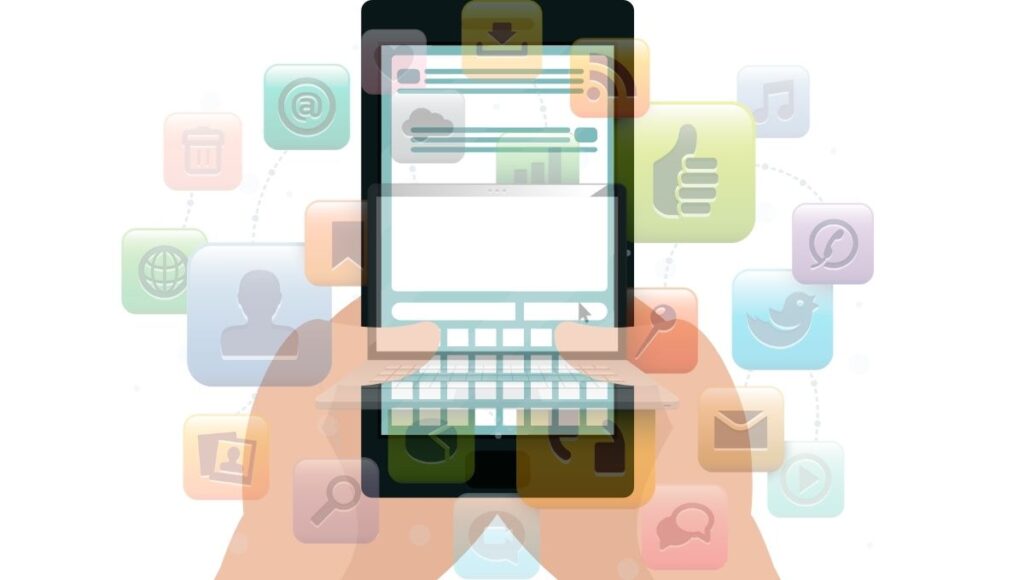
In the digital age, technology offers an array of tools and applications to boost productivity and time management. By leveraging these digital resources, you can streamline your workflow, stay organized, and enhance collaboration. 🚀 Let’s explore some powerful technology hacks to revolutionize your time management practices.
A. Task Management Apps: Task management apps are invaluable for organizing and prioritizing your to-do lists. 📋 These apps allow you to create tasks, set deadlines, and categorize them based on projects or priorities. Some popular task management apps include Todoist, Trello, and Microsoft To Do. Embrace these apps to ensure nothing slips through the cracks and stay on top of your daily responsibilities.
B. Calendar and Scheduling Tools: Digital calendars and scheduling tools are essential for efficient time management. 📅 Sync your calendar across devices to access your schedule from anywhere. Utilize features like color-coding for different types of activities and setting reminders to stay on track. Popular calendar apps include Google Calendar, Apple Calendar, and Microsoft Outlook.
C. Note-Taking and Documentation Apps: Gone are the days of traditional notepads and sticky notes. Note-taking apps allow you to capture ideas, meeting notes, and important information digitally. 🗒️ Some feature-rich note-taking apps include Evernote, OneNote, and Simplenote. With cloud synchronization, you can access your notes across multiple devices seamlessly.
D. Collaboration and Communication Tools: For team projects and remote work, collaboration, and communication tools are indispensable. 💬 Apps like Slack, Microsoft Teams, and Asana facilitate real-time communication, file sharing, and task tracking among team members. Embrace these tools to enhance collaboration and keep everyone on the same page.
E. Focus and Productivity Apps: Combat distractions and improve focus with focus and productivity apps. 🧠 Apps like Forest and Freedom help you stay concentrated on tasks by blocking access to distracting websites and apps for a specified duration. These apps promote deep work and effective time management.
F. Time Tracking Software: Time tracking software provides insights into how you spend your time, helping you identify areas for improvement and productivity trends. ⏱️ Apps like Toggl and RescueTime automatically track your activities and generate reports to analyze your time allocation. Use these apps to make informed adjustments to your daily routines.
G. Automation Tools: Simplify repetitive tasks and save time with automation tools. ⚙️ For instance, use email filters to sort and categorize incoming messages automatically. Zapier and IFTTT are powerful automation platforms that connect various apps to perform tasks without manual intervention.
H. Real-life Examples and Case Studies: Let’s explore how individuals and businesses have harnessed technology and apps for enhanced productivity:
Maximizing Efficiency at WTC Marketing: WTC Marketing implemented task management and collaboration apps, resulting in streamlined project management and improved team productivity. Deadlines were met promptly, and the team experienced enhanced coordination.
John’s Time Awareness with Time Tracking: John, a freelance consultant, used time tracking software to assess how he allocated his work hours. He identified time-wasting habits and adjusted his schedule, leading to improved focus and productivity.
Conclusion:
Technology and apps offer a plethora of possibilities to elevate your time management and productivity. 📱 By embracing these digital tools, you can optimize your workflow, stay organized, and accomplish more in less time. Harness the power of technology to unlock your full potential and achieve your goals efficiently.
Hack 8: Effective Delegation and Outsourcing
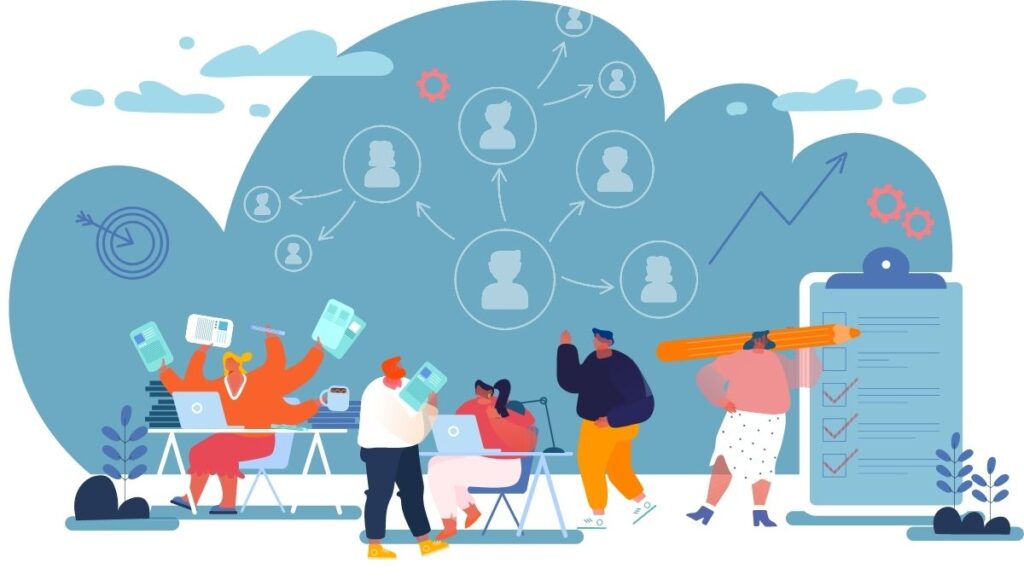
To optimize your productivity and focus on high-impact tasks, delegation, and outsourcing are essential strategies. By entrusting certain responsibilities to others, you free up valuable time and leverage the expertise of specialists. 🚀 Let’s explore how effective delegation and outsourcing can supercharge your productivity.
A. Identifying Tasks for Delegation: Begin by assessing your workload and identifying tasks that can be delegated without compromising quality. 📝 Routine and time-consuming tasks, administrative duties, and activities outside your expertise are prime candidates for delegation.
B. Building a Trustworthy Team: Effective delegation relies on a capable and trustworthy team. Surround yourself with individuals who possess the necessary skills and align with your vision. 🙌 Communicate clearly, provide clear instructions, and ensure team members understand their roles and responsibilities.
C. Setting Clear Expectations and Deadlines: When delegating tasks, set clear expectations and define specific deadlines. 🗓️ Provide all relevant information, resources, and access to tools needed to complete the task successfully. Regularly follow up on progress to ensure tasks stay on track.
D. Empowering Others and Encouraging Autonomy: Delegation is not micromanagement; it’s about empowering others to thrive. 🔑 Encourage autonomy and allow team members to use their expertise and creativity to achieve objectives. Offer support and guidance, but trust their capabilities to deliver results.
E. Benefits of Outsourcing: Outsourcing certain tasks to external experts or agencies can bring several advantages. It allows you to access specialized skills, reduces overhead costs, and enables you to focus on core business activities. 💼 Commonly outsourced tasks include accounting, marketing, and graphic design.
F. Leveraging Freelancers and Remote Workers: The rise of remote work and freelancing platforms has made it easier to find qualified professionals for specific projects. Platforms like Upwork, Fiverr, and Toptal offer access to a global talent pool for a wide range of services. 🌐 Leverage these resources to find experts who can contribute to your projects on a flexible basis.
G. Effective Communication and Collaboration: Successful outsourcing hinges on effective communication and collaboration. Establish clear channels of communication and maintain regular updates to ensure alignment and timely project delivery. 💬 Embrace technology like video conferencing and project management tools for seamless collaboration with remote teams.
H. Real-life Examples and Case Studies: Let’s explore how effective delegation and outsourcing have driven success for individuals and businesses:
Jane’s Business Growth: Jane, a small business owner, delegated administrative tasks to a virtual assistant, allowing her to focus on business development. She outsourced graphic design projects to a freelance designer, ensuring high-quality marketing materials. As a result, Jane’s business grew significantly.
WTC Tech’s Product Innovation: wtc Tech outsourced research and development to an external engineering firm. By leveraging their expertise, XYZ Tech accelerated product development and introduced innovative features, gaining a competitive edge.
Conclusion:
Effective delegation and outsourcing are powerful tools for optimizing productivity and achieving greater results. 🤝 By entrusting tasks to capable individuals or specialized agencies, you can concentrate on your core strengths and strategic initiatives. Embrace these strategies to maximize efficiency and propel your personal and professional growth.
Hack 9: Balancing Work and Life: The Art of Self-Care
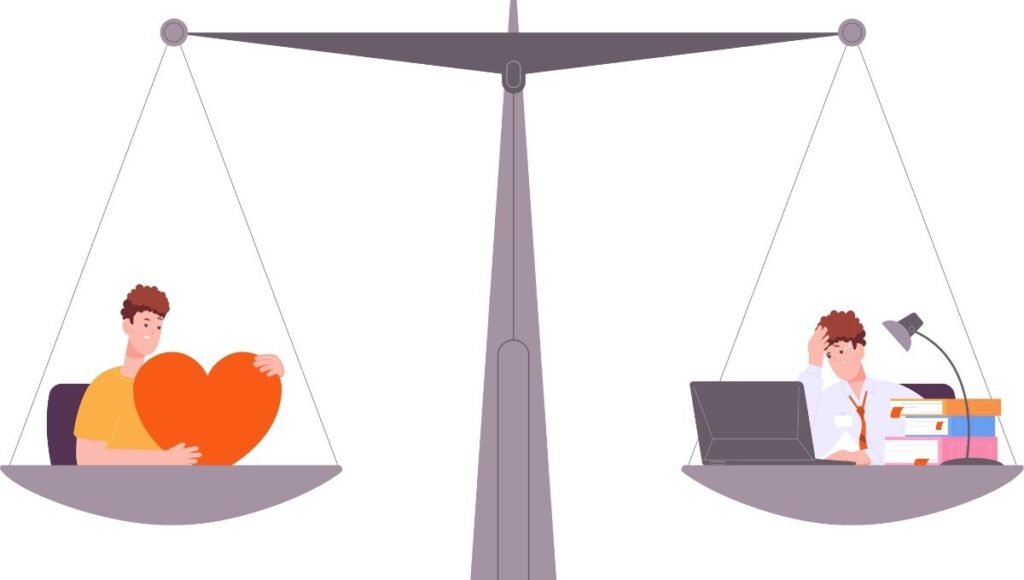
In the pursuit of productivity, it’s essential not to overlook the importance of self-care and work-life balance. 🚀 Nurturing your well-being allows you to recharge, maintain focus, and approach tasks with renewed energy and clarity. Let’s explore how self-care can enhance productivity and overall satisfaction in both personal and professional realms.
A. Recognizing the Significance of Self-Care:
Self-care encompasses various practices that promote physical, emotional, and mental well-being. It includes activities such as exercise, meditation, spending time with loved ones, and pursuing hobbies. 🧘♀️ Making time for self-care is not an indulgence; it is vital for your long-term productivity and happiness.
B. Setting Boundaries and Prioritizing Rest:
Establish clear boundaries between work and personal time. Avoid overworking and prioritize restful sleep. 😴 A well-rested mind is more focused, creative, and resilient, leading to improved problem-solving and decision-making.
C. Mindfulness and Meditation:
Practicing mindfulness and meditation can reduce stress and enhance your ability to concentrate. 🧘♂️ Take a few minutes each day to engage in mindful breathing or meditation exercises. These practices foster a calmer and more centered approach to your tasks.
D. Regular Exercise and Movement:
Physical activity is not only beneficial for your health but also for your productivity. 🏋️♀️ Engage in regular exercise or movement to boost your energy levels, improve mood, and enhance cognitive function.
E. Connecting with Loved Ones:
Nurture your relationships with family and friends. Spending quality time with loved ones provides emotional support and a sense of fulfillment outside of work. 👪 Engaging in meaningful connections helps you recharge and maintain perspective.
F. Pursuing Hobbies and Interests:
Set aside time to pursue hobbies and interests that bring you joy. Whether it’s reading, painting, or playing a musical instrument, these activities provide a healthy escape and enhance creativity. 🎨 Embrace your passions to refresh your mind and spark inspiration.
G. Unplugging from Technology:
While technology can enhance productivity, it’s crucial to take breaks from screens. Set designated times to unplug from devices and engage in analog activities. 📵 Disconnecting allows your mind to rest and prevents burnout.
H. Real-life Examples and Case Studies: Let’s explore how individuals have achieved work-life balance through self-care:
Mark’s Renewed Focus: Mark, a busy executive, struggled with juggling work and family commitments. By incorporating mindfulness practices and regular exercise into his routine, he found himself more present and focused at work and home.
Sarah’s Creative Reawakening: Sarah, a graphic designer, often felt drained after long hours of work. By dedicating time to her art and hobbies, she experienced a renewed sense of creativity, which positively impacted her design projects.
Conclusion:
Self-care is not a luxury but a necessity for maintaining productivity and overall well-being. 🌞 By prioritizing self-care and balancing work and life, you can recharge your mind, body, and spirit. This rejuvenation enhances your ability to tackle tasks with enthusiasm, efficiency, and a sense of fulfillment.
Hack 10: Embracing a Balanced and Productive Lifestyle

Productivity and success are not solely defined by relentless work. It’s crucial to strike a balance between your professional ambitions and personal well-being. 🌟 By nurturing your physical, mental, and emotional health, you cultivate the foundation for sustained productivity and fulfillment.
A. The Power of Purpose and Passion: A productive lifestyle is rooted in a sense of purpose and passion for your endeavors. 🌠 Align your goals with your values and passions to find intrinsic motivation that propels you forward even during challenging times.
B. Continuous Learning and Growth: Stay curious and committed to lifelong learning. 📚 Embrace new skills, seek knowledge, and adapt to emerging trends. This dedication to growth enhances your expertise and resilience in an ever-changing world.
C. Celebrating Progress and Achievements: Amidst your pursuit of productivity, take time to celebrate your progress and achievements, no matter how small. 🎊 Acknowledge your efforts and use positive reinforcement to stay motivated and focused on your journey.
D. The Art of Flexibility: Life is unpredictable, and plans may change. Embrace flexibility and resilience in the face of unexpected challenges. 💪 Adaptability empowers you to find creative solutions and navigate through uncertainties.
E. Your Unique Journey: Remember that productivity is not a one-size-fits-all concept. Each person’s journey is unique, and what works for others may not align with your preferences or circumstances. 🚶♀️ Embrace experimentation and discover the strategies that resonate with you the most.
F. A Final Message: As you embark on your path of balanced productivity, remember to be kind to yourself and maintain a positive outlook. 🌈 Embrace the journey with a growth mindset and the willingness to learn and evolve continually.
Conclusion:
Congratulations! You’ve now explored a diverse range of time management hacks that can transform your productivity and efficiency. 🚀 As we conclude this journey, let’s recap the essential lessons learned;
Throughout this comprehensive guide, we’ve delved into powerful time management strategies:
SMART Goals: Setting Specific, Measurable, Achievable, Relevant, and Time-bound goals to guide your endeavors effectively.
Eisenhower Matrix: Prioritizing tasks based on urgency and importance to optimize decision-making.
Time Blocking and Chunking: Structuring your day into focused blocks for tasks and breaking them into manageable chunks.
Two-Minute Rule: Swiftly handling quick tasks to prevent procrastination and build momentum.
Pomodoro Technique: Utilizing focused work intervals and breaks to enhance concentration and productivity.
Organizing Your Workspace: Creating an optimized and clutter-free environment to boost efficiency.
Harnessing Technology and Apps: Leveraging digital tools for task management, communication, and automation.
Effective Delegation and Outsourcing: Empowering others and outsourcing tasks to focus on core responsibilities.
Balancing Work and Life: Prioritizing self-care and work-life balance for sustained productivity and well-being.
Embracing a Balanced Lifestyle: Balance your professional and personal productivity, PHYSICAL, MENTAL, PROFESSIONAL.
You possess the tools and knowledge to cultivate a balanced and productive lifestyle. 🎉 Embrace the time management hacks, prioritize self-care, and foster a sense of purpose in your endeavors. With these principles in mind, you can achieve your goals, nurture your well-being, and lead a fulfilling and productive life.
May your journey be filled with purpose, productivity, and joy. Best of luck on your path to success!

FAQs
What are SMART goals, and how can they improve productivity through time management?
No, procrastination is not necessarily a sign of laziness. It can be a complex response to various underlying factors, such as fear, perfectionism, overwhelm, or lack of motivation.
How does the Eisenhower Matrix help with decision-making and prioritization to do time management?
The Eisenhower Matrix categorizes tasks based on urgency and importance, enabling you to prioritize effectively and make informed decisions on what to tackle first to do time management.
What is the Two-Minute Rule, and how can it combat procrastination?
The Two-Minute Rule suggests that if a task takes less than two minutes to complete, you should do it immediately. By promptly addressing quick tasks, you prevent them from piling up and minimize procrastination tendencies.
How does the Pomodoro Technique improve focus and productivity?
The Pomodoro Technique involves working on tasks in focused intervals of typically 25 minutes, followed by short breaks. This method boosts concentration, reduces distractions, and fosters productivity.
How can organizing your workspace impact productivity and efficiency?
A well-organized workspace minimizes distractions, reduces mental clutter, and creates an environment conducive to productivity and creativity.
What are some essential technologies and apps for time management?
Task management apps, calendar tools, note-taking applications, and collaboration platforms are among the essential technologies and apps that can streamline workflow and enhance productivity.
How do effective delegation and outsourcing contribute to productivity?
Effective delegation allows you to focus on high-impact tasks while outsourcing certain responsibilities to experts or agencies can optimize efficiency and access specialized skills.
Why are work-life balance and self-care crucial for productivity?
Work-life balance and self-care nurture overall well-being, prevent burnout, and enhance focus and creativity, leading to sustained productivity and job satisfaction.
How can balancing work and personal life impact productivity?
Striking a balance between work and personal life helps maintain energy levels, reduces stress, and promotes a positive mindset, all of which contribute to improved productivity.
How can embracing a growth mindset and continuous learning support productivity?
A growth mindset fosters adaptability, resilience, and a willingness to learn, enabling individuals to embrace challenges and continuously improve their skills and productivity.
What is the significance of celebrating progress and achievements?
Celebrating progress and achievements provides positive reinforcement, boosts motivation, and reinforces a sense of accomplishment, encouraging individuals to stay on their path of productivity.
How can individuals tailor time management strategies to their unique needs?
Time management is not one-size-fits-all. Individuals can experiment with different techniques, tools, and approaches to find what works best for their preferences, circumstances, and goals.
Can numerology help in overcoming self-doubt and improving self-confidence?
Yes, It can play a role in overcoming self-doubt by highlighting an individual’s inherent strengths and unique qualities. Embracing these insights fosters self-acceptance and confidence, empowering individuals to pursue personal growth with greater self-assurance.



